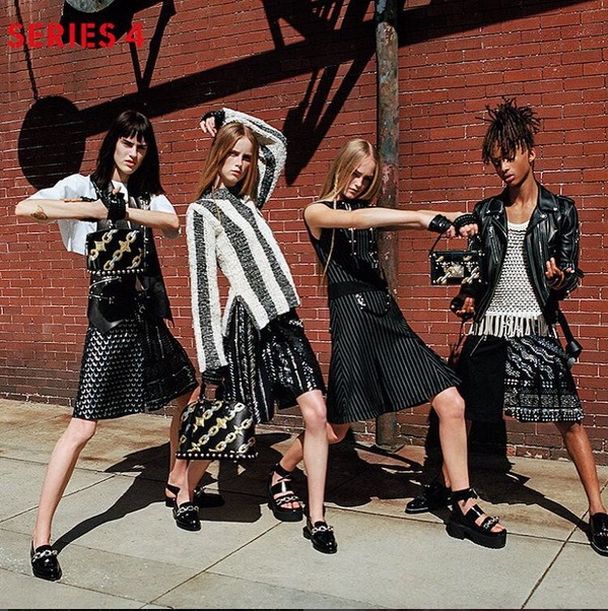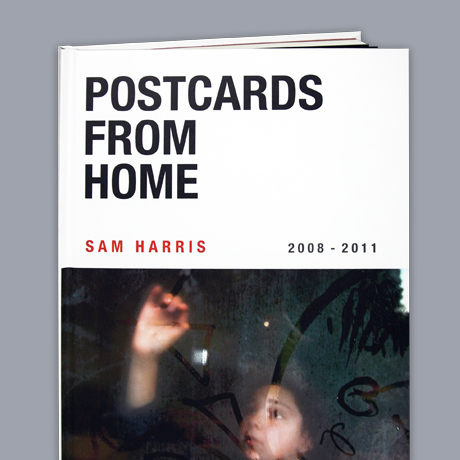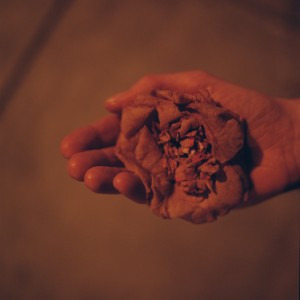I realised that students rarely make a fashion magazine when doing the A2 coursework so I decided to make one. I wanted my work to be different from everyone else’s and to showcase it in a different and unique way. I came up with a relevant topic to impact my spectators which I also have strong views on, I wanted it to have an underlining message that is obvious to the spectator and that they are able to see clearly throughout. For this idea I want to carry on my work of self-portraiture and dressing up as both the male and female characters in my photographs. I aim to make advertisement images that almost mimic images that I’ve seen of models making ad campaigns and also exaggerating it and somewhat making a joke out of it. Also, I wanted to make fashion inspired images in the magazine dressing as both the male and female characters wearing the clothing that both men and women wear. I really like the idea of having no boundaries in fashion and feeling inspired by fashion from both men and women I feel that it is important for people not to feel restricted in how they can express themselves in their own clothing. I believe that men should be able to wear skirts and dresses without feeling embarrassed or being labelled as ‘gay’, Scottish men wear kilts and thats fine but anything else is seen as radical. Also, the fact that is is seen as weird if they wear a tailored suit or baggy ‘tom-boy’ clothing. Someone who is a huge advocate for this is Jaden Smith and I really love that he has become the new face of Louis Vuitton womenswear because it is so true that men and women should be able to wear whatever they want and we shouldn’t have to gender specify clothing and separate from one another. However, there are two sides to this. I do think that there are certain types of clothing that more so needs to be modelled by women and needs to be modelled b women. Women and men are shaped differently and so the ideal would obviously be a model for women who has breast and commonly larger hips whereas men would usually prefer a male model with broader shoulders and more muscular features. That is simply how our bodies are and we can’t really help or change that. Ultimately, I do think that if worn in the right way men and women shouldn’t have to feel restricted by stereotypes given to men and women hundreds of years ago. I feel that there is a lot to say on this topic and I want to express this through my own work, it’s so interesting to me and I want to develop it further. I also think that this has a lot to do with body image and being the ideal being. Both males and females have to deal with stereotypes and expectations given through advertisements and models. Body types are so different and people are shaped differently yet we all aspire and try to look the same way.
Emma Watson on gender equality within the fashion industry: http://www.vogue.co.uk/voguevideo/genres/film–tv/2015/06/emma-watson-he-for-she–inspirational-gender-equality-un-speech
I came across an article the other day with the release of the latest Louis Vuitton campaign for womenswear with male actor and musician Jaden Smith becoming the new face of the project. Smith has always worn more out there pieces with dresses and skirts being a part of his everyday wardrobe. However, Smith doesn’t wear feminine looking pieces that are fitted to the shape of the woman, he wears pieces that are baggy and are on trend. I really like his style as it is unique and looks great, he manages to stand out. Smith wants gender stereotypes to be scrapped and his aims of this campaign is to change the worlds perception of what both men and women should and could wear. This reminds me of what Claude Cahun was trying to bring across in her own images by smudging the lines between having a male identity and female identity against stereotypes. I really love the ad campaign for Louis Vuitton as I think that it will get people talking and I like that Jaden is using his fame to make the world aware of issues such as gender stereotypes and the pressures that men and women are put under in order to fit in with what society expects us to look like. I also think that it has a great deal to do with the internet and how we are all so involved with broadcasting our lives on social media, we almost become accustomed to judging one another and being judged.
Link to Louis Vuitton article: http://www.pinknews.co.uk/2016/01/04/jaden-smith-named-as-the-new-face-of-louis-vuitton-womenswear/?utm_source=PNFB&utm_medium=SocialFB&utm_content=FBJW&utm_campaign=PNFacebook
Media coverage on Jaden Smith ad campaign: http://www.usmagazine.com/celebrity-style/news/jaden-smith-poses-in-a-skirt-for-louis-vuitton-womenswear-w160721
‘Tomboy’ and ‘girly-girl’ are names that I’ve grown up with and become accustomed to. Growing up I was always the girly-girl who wore pink EVERYTHING and seemed to aspire to becoming a princess when I grew up while my two best friends growing up were both seen as tomboys and would run around and not care about how they looked. Don’t get me wrong I loved running around and playing outside with my mates but because of the way I dressed and the fact that I liked the colour pink meant that I was labelled as a ‘girly-girl’. We are constantly faced with labels throughout our lives and often that feels restricting and confining, although at the time I liked being a girly-girl and I thought that was the norm. I believe that as youngsters we shouldn’t be encouraged to dress or look a certain way, we should be taught to freely express ourselves and wear whatever we want. Throughout history men have worn dresses and skirts such as the Roman period and gladiators, Greek God’s and the people, Egyptian pharaohs and typical Egyptian people. All of these time periods show men and women wearing the same clothing just in slightly different ways to flatter and work well with their physique which I think looks great and we should embrace the past and bring it back into our modern world. I feel like white English people have almost become culture-less and don’t really have anything that is definitively English and it doesn’t stand out. The Scottish have kilts which have been around for centuries and haven’t lost their same patriotism or presence within the Scottish community. The vast black culture in America have their African cultures in their fashion and their vibrant clothing. I just feel like our modern first world countries have almost lost what we had and we need to embrace our cultures more and bring back old fashion traditions that allow us to remember and honour our ancestors as well as becoming more accepting of one another and our different fashion choices without worrying how it looks on us because we are female or because we are male.
I feel like this topic is becoming more wide scale and will be a huge part of 2016 as people are looking more and more for gender equality. As a modern society we are very stuck in our ways and don’t like change or anyone that stands out from the norm. We tend to focus on the negative attributes of people and what they are wearing and their physical appearance when in reality it shoudn’t be all about that and people should be able to wear whatever they want without feeling that they are going to be judged or ridiculed by others.
Other current issues which are seemingly surfacing in the past year and finally changing is transgender people. Recently, a film came out titled The Danish Girl based on a true story about a female who was trapped inside of a males body. This film was really interesting and emotional to watch, really giving me an insight to how transgender people feel and what it could possibly to like to be trapped inside the wrong body. This is a really powerful film and was actually 15 years in the making as it took a long time to do all the accurate research and to get the project off the ground. I think that this film is very powerful and addresses well an issue which has become so widely talked about with the transition of Bruce Jenner becoming her true self as Caitlyn Jenner. The issues with this aren’t in the people who are transgender but the issue lies with those who don’t understand it and who don’t wish to understand it. Those people who think that it isn’t natural and so shouldn’t be the case and isn’t a part of nature. These are the people who also stereotype men and women and have separate expectations and standards for both genders. Your sex defines whether or not you have male parts or female parts but gender is a set of stereotypes given to individuals belonging to a sex that can have positive or negative impact. Usually, being labelled and stereotyped as a gender can be quite negative as people are making assumptions about you as a person because of your sex and because of the skin that you were born in which is completely wrong and something that I want to explore in my work and defy through my photographs. I want to challenge the gender norms and stereotypes and smudge the lines between being explicitly male or female.














































